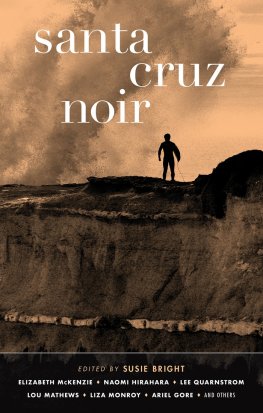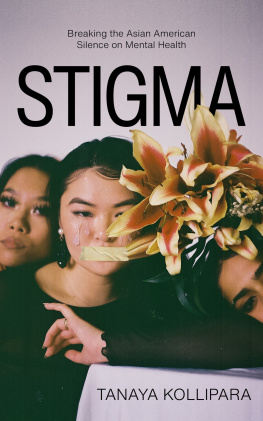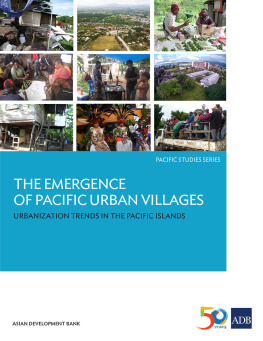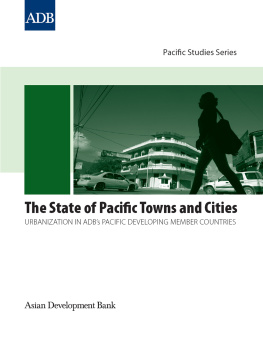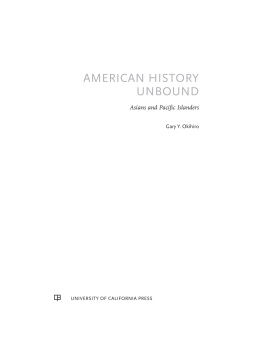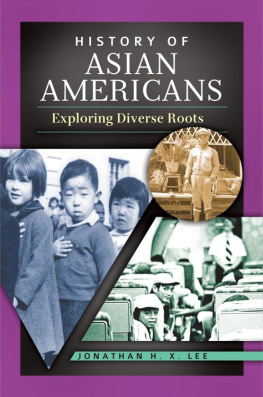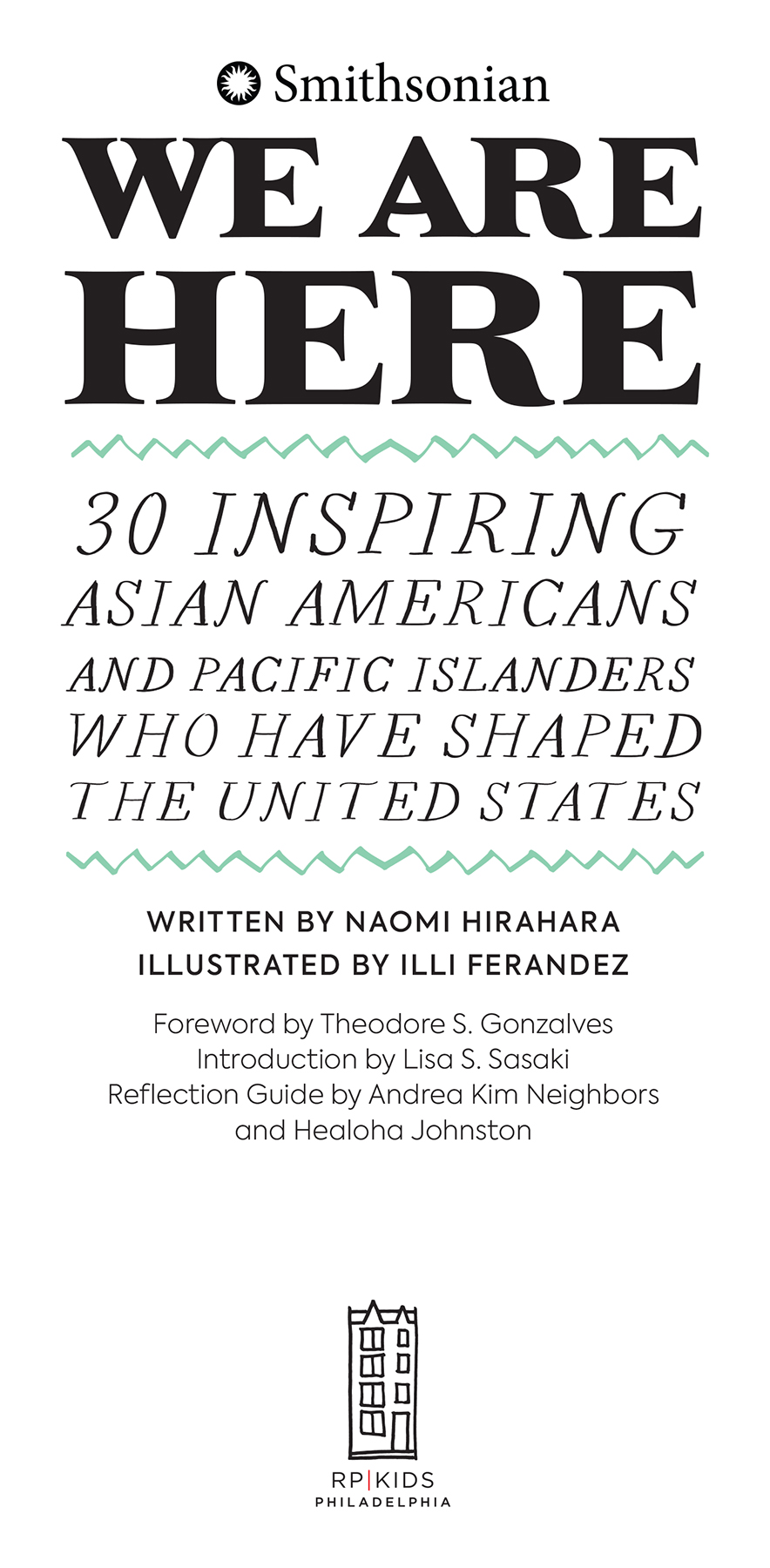
Copyright 2022 by Smithsonian Institution
Smithsonian This trademark is owned by the Smithsonian Institution and is registered in the U.S. Patent and Trademark Office.
Interior and cover illustrations copyright 2022 by Running Press
Cover copyright 2022 by Hachette Book Group, Inc.
Hachette Book Group supports the right to free expression and the value of copyright. The purpose of copyright is to encourage writers and artists to produce the creative works that enrich our culture.
The scanning, uploading, and distribution of this book without permission is a theft of the authors intellectual property. If you would like permission to use material from the book (other than for review purposes), please contact permissions@hbgusa.com. Thank you for your support of the authors rights.
Running Press Kids
Hachette Book Group
1290 Avenue of the Americas, New York, NY 10104
www.runningpress.com/rpkids
@RP_Kids
First Edition: October 2022
Published by Running Press Kids, an imprint of Perseus Books, LLC, a subsidiary of Hachette Book Group, Inc. The Running Press Kids name and logo is a trademark of the Hachette Book Group.
The Hachette Speakers Bureau provides a wide range of authors for speaking events. To find out more, go to www.hachettespeakersbureau.com or call (866) 376-6591.
The publisher is not responsible for websites (or their content) that are not owned by the publisher.
Library of Congress Cataloging-in-Publication Data Names: Hirahara, Naomi, 1962 author. | Ferandez, Illi, illustrator. Title: We are here : 30 inspiring Asian Americans and Pacific Islanders who have shaped the United States / by Naomi Hirahara; illustrated by Illi Ferandez; foreword by Theodore S. Gonzalves; introduction by Lisa S. Sasaki; reading guide by Andrea Kim Neighbors and Healoha Johnston. Other titles: 30 inspiring Asian Americans and Pacific Islanders who have shaped the United States Description: First edition. | Philadelphia: Running Press Kids, 2022. Identifiers: LCCN 2021049156 | ISBN 9780762479658 (hardcover) | ISBN 9780762479665 (ebook) Subjects: LCSH: Asian AmericansBiographyJuvenile literature. | Pacific Islander AmericansBiographyJuvenile literature. Classification: LCC E184.A75 H567 2022 | DDC 920.0092/95073dc23/eng/20211108 LC record available at https://lccn.loc.gov/2021049156
ISBNs: 978-0-7624-7965-8 (hardcover), 978-0-7624-7966-5 (ebook)
E3-20221116-JV-PC-COR
Thank you for buying this ebook, published by HachetteDigital.
To receive special offers, bonus content, and news about ourlatest ebooks and apps, sign up for our newsletters.
Sign Up
Or visit us at hachettebookgroup.com/newsletters
W e are here because you were there. That sentence has become shorthand for a number of experiencessojourns, migrations, and movements. It can certainly be used to trace that long arc of Asian American and Pacific Islander (AAPI) stories that this book suggests through individual portraits. Who is the you in that sentence? Take a look at Loni Dings fantastic three-part documentary called Ancestors in the Americas . The first episode is titled Coolies, Settlers, and Sailors: Voyage to the New World. It helped to rearrange my thinking about my familys personal journey from the Philippines to the United States. But it did much more. It demonstrated the need for all of us to think more critically about where and when we entered this evolving American story. Ding stepped back centuries and widened the frame, making global connections to AAPI routes and roots. These journeys were not just to the United States, but to the Americas as a hemisphere. One of the historians Ding interviewed for the program reminded viewers that Europe had had Asia on its mind for centuries. So much so, an Italian sailor was financed by Spanish funds in the search for an elusive passage to the Orient. He landed in whats now called the Bahamas and thought he was in the Indies. And consider how the United States third president, Thomas Jefferson, commissioned Lewis and Clarks expedition to find an overland path to the Pacific Coast and commerce.
Our stories have been woven into the hemisphere for centuries. With the formal end of the global trade of enslaved Africans in the early 1800s, Indians and Chinese were sent to the Americas as replacement labor. From 1565 to 1815, a grand galleon trade route linked Nagasaki, Macau, Malacca, and Goa to Lisbon, Seville, Antwerp, Havana, Panama, Rio, and Limawith everything anchored between Manila and Acapulco. Weve been here.
The year 2022 marks the Smithsonian Asian Pacific American Centers twenty-fifth year of researching, documenting, and sharing AAPI stories. We Are Here is the perfect opportunity to acknowledge the diversity and pace of our communities growth. Beyond the global cities weve called homeHonolulu, San Francisco, Seattle, Los Angeles, Chicago, and New York Cityyoure just as likely to find our families and networks in Atlanta, Minneapolis, Little Rock, Houston, and Madison. Numbering more than twenty-four million persons, Asian Americans and Pacific Islanders are the fastest-growing racial group in the country. Of the ten most commonly spoken languages in US homes other than English and Spanish, four hail from Asia. Were everywhere.
When the Asian American movement was in full swing, poet-activists like Janice Mirikitania Stockton, Californiaborn daughter of farmersgave us a powerful vision of how to think about the expanse and beauty of our communities. In a poem called Firepot, she wrote about our routes and roots: we have been fractured / made to look at each other / as though we are / divided / but if we see with clear eyes, we know we are bound by common shackles:
Manila to Vietnam
Korea to Laos China to the Islands
Hiroshima to Cambodia Post St. to Hunters Pt.
Kearney St. to Richmond Mission to the Valley
Bound by our Survival
Bound by our Strengths
W e Are Here: 30 Inspiring Asian Americans and Pacific Islanders Who Have Shaped the United States will introduce you to members of diverse communities and their stories of resilience, adversity, and joy. It is my honor to be a part of a book that will reach readers like you across the United States, sharing stories that I have been proud to learn more about as director of the Smithsonian Asian Pacific American Center. These stories make our work at the Smithsonian stronger and more inclusive. They also reflect fuller American stories that all readers deserve to see.
This book came together during a difficult time for our communities. The global spread of COVID-19 led to incidents of hate and bias against Asian American elders, women, and young adults. These heartbreaking incidents prompted the center and the Smithsonian to think about how we could better support our communities and the nation. We created a virtual care package, filled with meditations, short films, and musical performances created by Asian Americans and Pacific Islanders. We also developed new resources for teachers and caregivers about the impacts of negative stereotypes on AAPI communities and how to unlearn these biases. Sadly, these incidents are not new but part of a longer American history that we dont often learn about in school.
It is my hope that these thirty profiles of incredible AAPIs introduce you to stories that you did not know before. I also hope these profiles spark conversations with your family, friends, and classmates about why AAPI stories are important to learn. As you read the following pages, you may be surprised by who you see in this book. Because we value inclusion and solidarity, youll read the stories of Pacific Islanders and Arab Americans. Their experiences have not always been visible in AAPI accounts, yet Pacific Islander, Arab American, and Persian American experiences are deeply intertwined and representative of AAPI communities and identities. We selected thirty profiles that speak to our global connections and histories, but they are not reflective of all AAPI stories. There are 22 million Asian Americans and 1.5 million Native Hawaiians and Pacific Islanders in the United States. In Hawaii alone, 700,000 Native Hawaiians and Pacific Islanders live there today. While youll meet inspiring activists, artists, musicians, actors, writers, scientists, and entrepreneurs, this is just a start. There are many more stories to tell.




